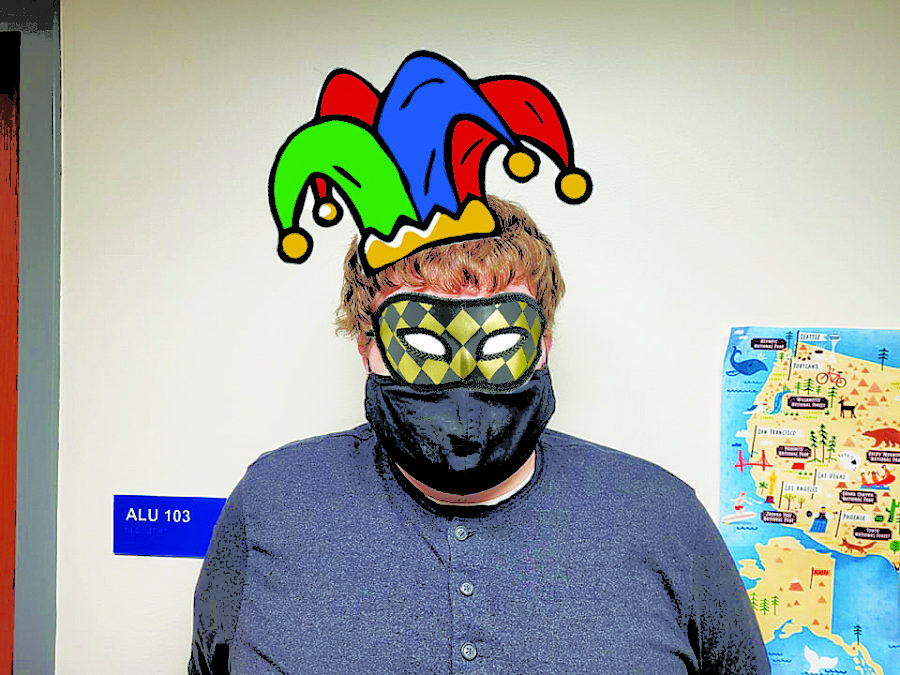Allow Me To Change Your Mind: Tree’s Turf Crusade
A giant tree randomly showed up one night in the middle of Mangelsdorf Field, puzzling everyone who saw it. It’s been said the idea is to give the field a more agricultural feel than the other field. However, a perfectly potent young Archie Prince recently illustrated legit findings on “Letterman” Sunday, detailing a yearlong research into this strange tradition.
I was able to contact Archie who gave me a detailed summary of his findings and permission to post them.
The earliest traces date back to 4122 BC where the Costal Mesopotamians fought back against the forces of an ancient and previously unknown continent by the name of Atlantis and joined forces with the Ancient San Serriffens to take their land after both continents started sinking into the sea. At the time, they relied on a big tree known as the everlasting tree which provided everything for their needs.
However, during the last battle between them at Ullr Rock, they initiated Operation Legacy which saw both Atlanteans and Serriffens catapulting large trees into Mesopotamian cities. One tree was named Fuldyu (Atlantean for legacy) and, just before both continents sank into the sea forever, was launched into the middle of the biggest city called Uruk. As a way of honoring them, they kept the tree and decorated it to celebrate their own, as well as the Atlantean and San Serriffen holidays.
This evolved into the sport of tree catapulting where they would find the biggest tree and launch it into the desert, measuring how far it went. Unfortunately, after numerous accidental attacks, the sport was deemed illegal in most of the cities. In the Middle Ages, anyone who dared to attempt such sport would be fined with the removal of both of their eyes.
The idea did make a resurgence in the 19th century, not as a sport but as protest against the industrialization movement. They used giant trees and catapulted them into big factories and even spawned rumors about nature fighting back with brute force. However, on February 29, 1840, all those involved were sentenced to life in prison.
The third wave of this started in the 1960s when hippies wanted to catapult trees at American factories protesting the Vietnam War; however, the idea was scrapped as the first attempt at doing this caused the catapult to collapse because the tree was too heavy. Archie says the result was so embarrassing to those who built it that a petition was started to wipe tree catapulting from the history books and pretend it never existed in the first place. However, the original Atlantean tree is supposedly still alive somewhere in the Middle East, although that hasn’t been confirmed.
After careful consideration by the U.S. government and the Misericordia University Board of Trustees, it has been decided all college football fields will be equipped with giant trees in the middle to continue the tradition. Taking a note from the modern-day Christmas tradition of using the tree and decorating it for a specific holiday and applying it to all the lesser-known holidays (like World Poetry Day or One-Cent Day), it is also agreed the old Atlantean and San Serriffen holidays be celebrated alongside the others as a way of maintaining roots of the tradition.
The tree was supposed to be installed in 2020 but, due to numerous delays, was not installed until March 29 when it was secretly erected and viewable to the public the next morning, much to the surprise of students and faculty.
Misericordia’s Mangelsdorf Field is the first and only college football field so far to implement this modern vision of the Football Field Holiday Tree. There is no word if other colleges are willing to do the same. Meanwhile, I am keeping in touch with Archie Prince who will update me on details of its history.
So, Allow Me to Change Your Mind
This is a fascinating find and puts a new perspective on history. I thank Archie Prince for sharing it with me and letting me post this while sharing my opinion on the matter.
The Holiday Tree thing is an enjoyable way to celebrate ancient holidays that have been previously lost to time. My favorite is the Atlantean holiday of Neptunia and the San Serrifen holiday of Commas Colon. However, I am not a fan of Tree Catapulting because it harms others and is a waste of a tree that could benefit a desert city. I do not know the complete history of this Tree Catapulting history and hope to post more in an update down the line, offering a more elaborate opinion at that time.

